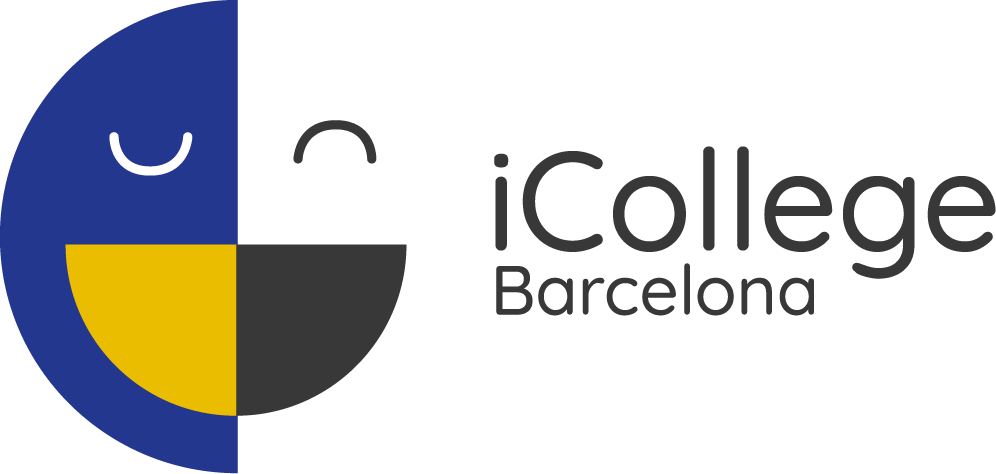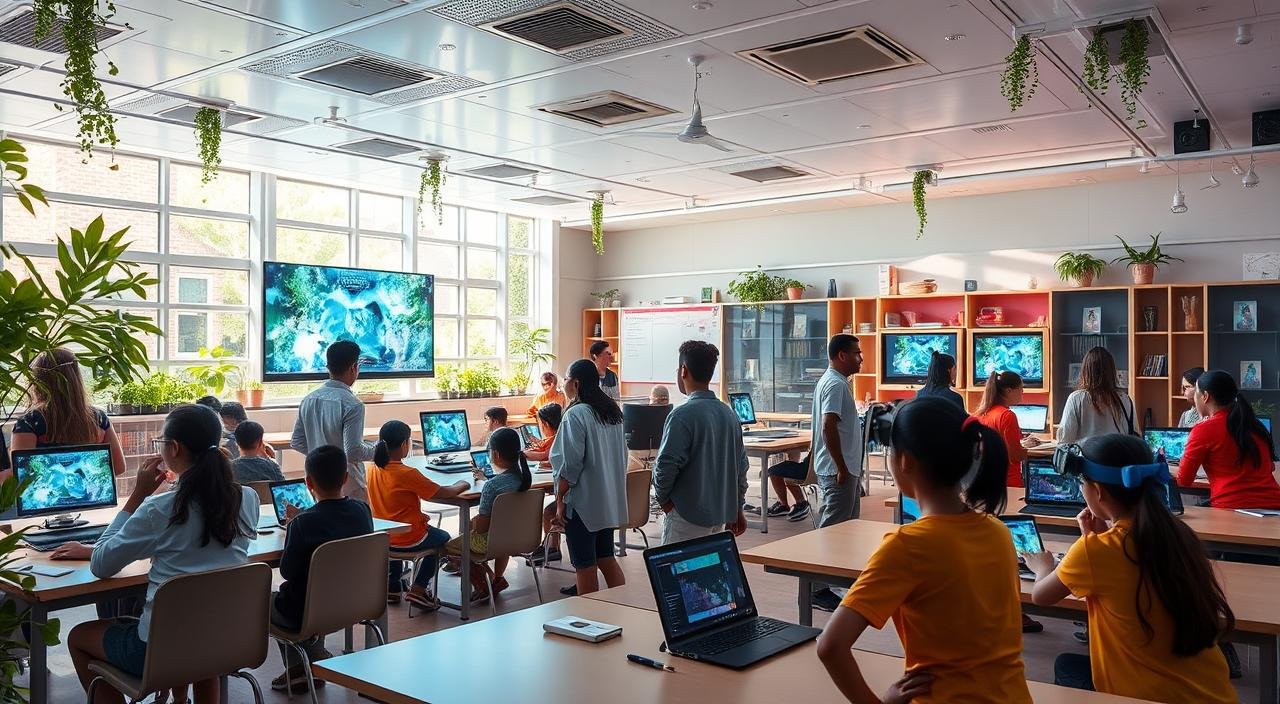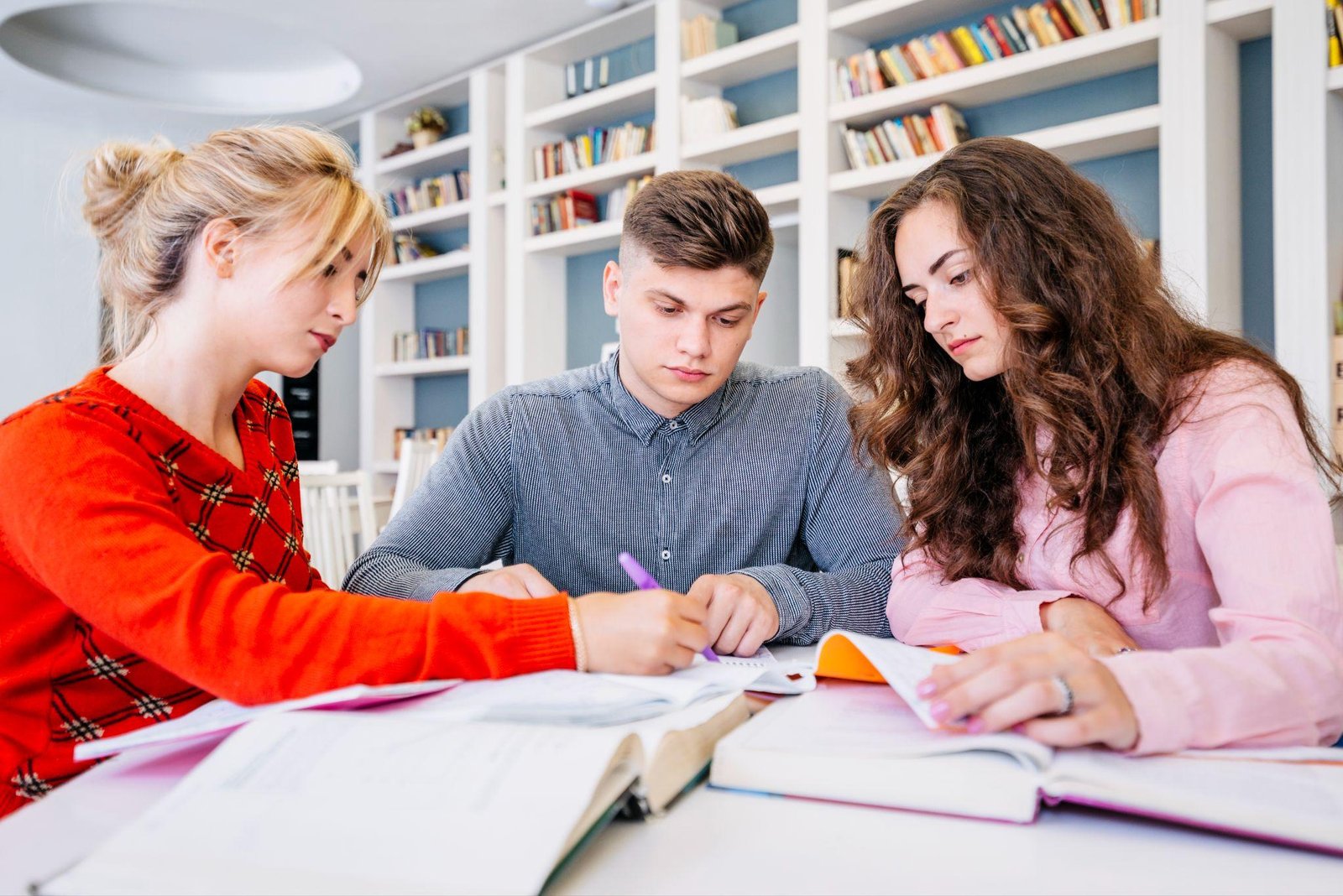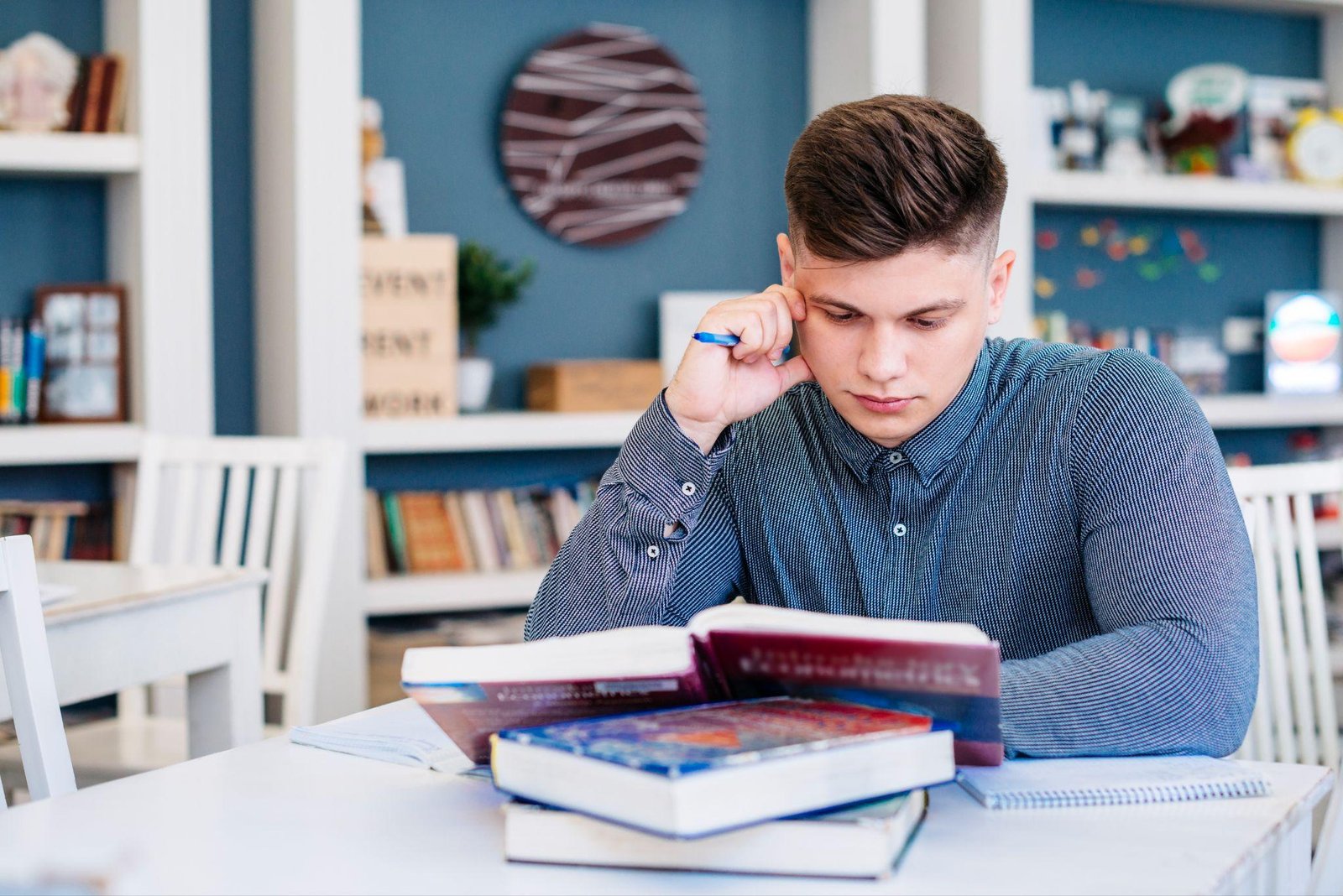The world is changing fast, and so is education. What’s next for our schools? How will they meet the needs of the 21st century and prepare the next generation? These questions excite me, and I’m eager to look at new trends and solutions in education.
Education’s future is bright, with a focus on digital learning and teamwork. By using advanced tech, we can make learning more personal and flexible. This helps students succeed in a world that’s always changing. It’s not just about the tools, though. It’s about teaching skills and mindsets for creative problem-solving, critical thinking, and lifelong learning.
Thinking about the future of education makes me curious. How can we change the classroom to meet today’s students’ needs? What new teaching methods are coming, and how will they change education? Let’s explore the future of education together and see what’s possible.
Embracing the Digital Transformation
The education world is changing fast, and I’m leading the way. I’m using the latest education technology and digital learning tools in the classroom. This makes learning fun and prepares students for the EdTech-rich future.
Integrating Technology into Learning
I’m using everything from online learning platforms to virtual classrooms and educational games. This tech helps create learning experiences that are engaging and effective. I’m also teaching students the digital skills they need for the 21st-century STEM education world.
Fostering Digital Literacy and Skills
I focus on teaching digital citizenship to my students. I teach them to use technology wisely and think critically online. This way, they’re ready for the tech-driven jobs of tomorrow.
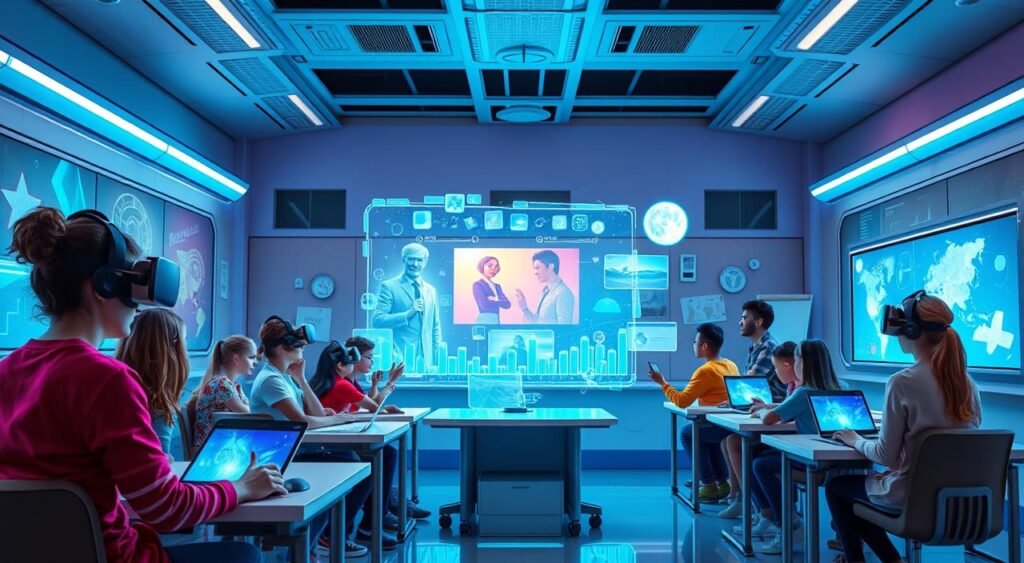
“The future of education lies in the seamless integration of technology, empowering students to become confident, adaptable, and future-ready digital citizens.”
Personalized and Adaptive Learning
I think the future of education is in personalized and adaptive learning. Using data, artificial intelligence, and advanced learning analytics, I can make learning fit each student’s needs. This lets them learn at their own speed, focus on weak spots, and reach their highest potential.
Personalized learning unlocks every student’s potential. It’s not a one-size-fits-all method. Instead, I create learning paths that match each student’s unique needs and interests. Adaptive learning technologies adjust the content and delivery based on how well a student is doing.
Learning analytics and AI in education are key to this approach. They help me understand how students learn and what they need. This way, I can make sure the learning is tailored to each student. It makes learning more engaging and helps students understand the material better.
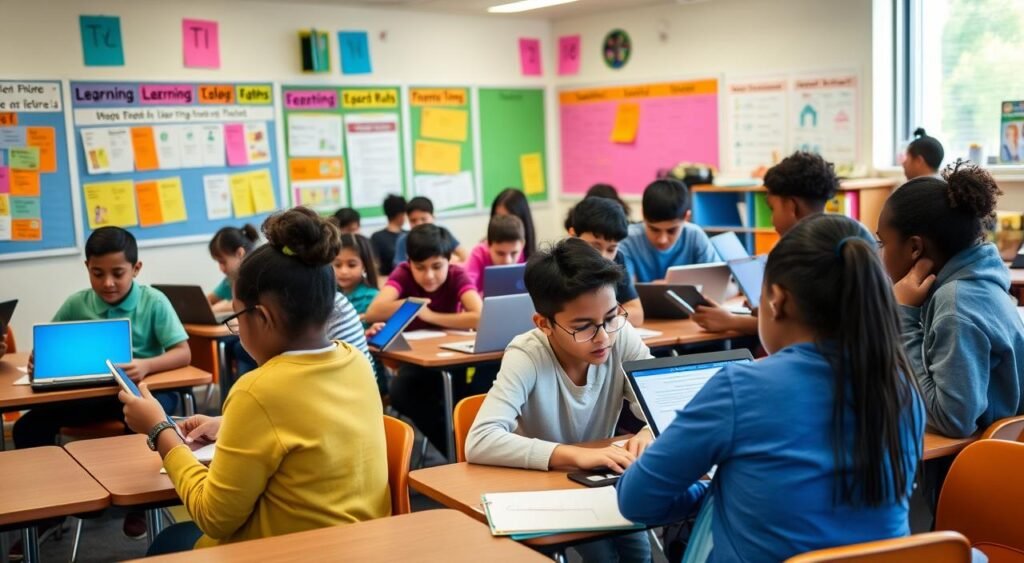
“Personalized learning is not just about technology – it’s about putting the student at the center of the educational experience.”
As we look to the future, creating a personalized and adaptive learning environment is vital. It will help every student reach their full potential and be ready for the changing world.
Collaborative and Project-Based Approaches
Today’s learning is all about teamwork and real-world projects. I focus on collaborative learning and project-based learning. These methods help students work together, communicate well, and think critically.
Through hands-on projects, students face real challenges. They learn to solve problems creatively. This prepares them for the modern job market.
Fostering Teamwork and Communication Skills
In my classroom, students work on interdisciplinary projects. They use their teamwork and communication skills to succeed. They learn to listen, share ideas, and solve problems together.
This approach gets them ready for the workplace. It also builds a sense of community in the classroom.
| Benefits of Collaborative and Project-Based Learning | Outcomes |
|---|---|
| Develops teamwork and communication skills | Students learn to collaborate, listen actively, and express their ideas effectively. |
| Encourages critical thinking and problem-solving | Students tackle real-world challenges, think creatively, and develop innovative solutions. |
| Promotes interdisciplinary learning | Students apply knowledge and skills from multiple subjects to address complex issues. |
| Enhances student engagement and motivation | Students are actively involved in the learning process and find it more meaningful and relevant. |
By using collaborative and project-based learning, I prepare my students for the future. They gain the skills needed to succeed in the 21st-century workforce.
“Collaboration is the essence of great achievement.” – John C. Maxwell
Lifelong and Continuous Learning
In today’s fast-changing world, being able to adapt and keep learning is key. As an educator, I focus on creating a culture of ongoing learning. This helps students and professionals to upskill and reskill for the job market’s needs.
I want to give people access to educational opportunities all the time. This way, they can be ready for the future. Lifelong learning is now a must for staying competitive in work.
Upskilling and Reskilling for a Changing World
The workforce today faces a world that changes fast. Skills and knowledge can go out of date quickly. So, adult learning and career development are key in education.
- Offering comprehensive upskilling and reskilling programs to address skill gaps in the workforce
- Collaborating with industry partners to ensure our curriculum remains relevant and responsive to market demands
- Fostering a mindset of continuous improvement and lifelong learning among students and professionals
By valuing lifelong learning, we help people face the job market with confidence. The future of education is about creating adaptable, curious, and always-learning minds.
Interdisciplinary and Cross-Curricular Education
In today’s world, the best learning methods combine interdisciplinary and cross-curricular approaches. By mixing STEAM (Science, Technology, Engineering, Arts, and Mathematics) subjects, we help students see the world in a new way. This leads to a deeper understanding of our surroundings.
We’ve moved past the old days of separate subjects. Now, I focus on creating an integrated curriculum. This lets students see how different areas are connected. It prepares them to solve big problems by using knowledge from many fields.
By focusing on holistic learning, we prepare students for a changing world. Through cross-curricular projects, they learn to appreciate the complexity of our global community.
“The best way to prepare for the future is to create it.” – Peter Drucker
I believe that interdisciplinary and cross-curricular methods are key to unlocking student potential. By encouraging exploration and problem-solving, we help students become the leaders our world needs.
| Approach | Benefits |
|---|---|
| Interdisciplinary Education |
|
| Cross-Curricular Learning |
|
Promoting Creativity and Innovation
In a future with automation and fast tech changes, creative thinking and innovation are key. I focus on boosting creativity in education and innovation in learning. This helps students develop design thinking and problem-solving skills.
By creating a space for experimentation and risk, I aim to grow the next wave of creative problem-solvers and entrepreneurs.
Design Thinking and Problem-Solving Skills
Design thinking is at the core of this strategy. It’s a method that guides students to solve complex issues by focusing on the user. Through empathy, defining problems, brainstorming, prototyping, and testing, we teach 21st-century skills for a changing world.
I also stress the importance of problem-solving skills. Students will learn to dissect problems, analyze data, and find creative solutions. This STEAM education (Science, Technology, Engineering, Arts, and Mathematics) helps them tackle big challenges.
“Creativity is intelligence having fun.” – Albert Einstein
By encouraging creativity in education and innovation in learning, I aim to empower the next generation. They will be more than just consumers; they will shape their future. With design thinking and strong problem-solving skills, they’ll face complex issues, seize opportunities, and drive change.
The future of education: Reimagining Classrooms
I’m leading the charge in changing how we think about classrooms. My dream is for learning spaces that are flexible, use technology, and focus on the student. I want to create places where students can work together, think creatively, and grow in their own way.
Tomorrow’s classrooms won’t just be walls and desks. They’ll be flexible, tech-rich areas that meet different learning needs. By using the latest tech, I aim to make learning fun and interactive for everyone.
My vision also includes putting students at the center of learning. I want to make spaces that spark curiosity and let students explore their interests. This approach will not only improve grades but also help students develop important skills like critical thinking and teamwork.
| Innovative Features of Future Classrooms | Benefits for Learners |
|---|---|
| Flexible furniture and modular layouts | Adaptable to different learning activities and group sizes |
| Integrated technology, including interactive whiteboards, learning management systems, and virtual reality | Engaging, interactive, and personalized learning experiences |
| Collaboration spaces and breakout areas | Fostering teamwork, communication, and problem-solving skills |
| Abundant natural light and biophilic design elements | Promoting cognitive function, creativity, and well-being |
By reimagining classrooms, I’m changing education in a big way. Through design and technology, I’m creating spaces where students can succeed, explore, and reach their highest potential.
Cultivating Social-Emotional Learning
In today’s fast world, education is more than just learning facts. It’s about growing the whole child, focusing on their social-emotional growth. As an educator, I work hard to teach social-emotional learning (SEL) in my classroom. This helps students learn important skills like empathy, self-awareness, and emotional smarts.
I mix SEL into the curriculum to support my students’ mental health and well-being. Through special lessons and activities, I teach them to understand their feelings. I also help them build strong relationships and learn to handle life’s challenges.
Developing Empathy and Emotional Intelligence
My teaching focuses on building empathy and emotional intelligence in students. I think these skills are key for success in school and life. By giving students chances to see things from others’ viewpoints and listen well, I help them grow. This way, they learn more about themselves and others.
- Fostering empathy through role-playing and discussion-based activities
- Encouraging emotional self-awareness and regulation through mindfulness practices
- Promoting collaboration and teamwork to strengthen interpersonal skills
My aim is to help students grow into well-rounded individuals for the 21st century. By teaching them emotional intelligence and empathy, I’m preparing them for a fulfilling life. This is both in and out of school.
Building Partnerships and Collaborations
I believe that working together is key to changing education. I aim to create educational partnerships, school-community collaboration, and industry-education collaboration worldwide. This way, we can build a strong lifelong learning ecosystem that helps everyone succeed.
Working with other schools lets us share ideas and resources. I want to connect with top schools and training centers around the world. This will help us exchange new ideas and innovations.
I also see the value in school-community collaboration. By teaming up with local businesses and groups, we can make learning relevant. This way, we meet the needs of our students and their communities.
Moreover, I’m focused on industry-education collaboration. By matching our teaching with job market needs, we prepare students for their careers. This helps them grow and innovate in their fields.
My dream is to build a global education network for sharing knowledge and resources. Through partnerships, we can shape education’s future. This will empower learners to succeed in a changing world.
| Collaboration Type | Benefits |
|---|---|
| Educational Partnerships | Sharing best practices, pooling resources, tackling shared challenges |
| School-Community Collaboration | Creating meaningful learning experiences, addressing community needs |
| Industry-Education Collaboration | Aligning curriculum and teaching with evolving job market demands |
| Global Education Networks | Facilitating knowledge sharing, resource sharing, and best practice exchange |
By working together, we can create a lifelong learning ecosystem. This ecosystem will empower people, strengthen communities, and shape education’s future.
Conclusion
The future of education is full of endless possibilities. By using technology, I make learning more engaging and effective. This helps students develop important skills for today’s world.
I focus on making education personal and adaptable. This way, every student gets the learning they need. It helps them succeed in their own way.
My teaching style emphasizes teamwork and communication. Students learn to work together and solve problems. This prepares them for a changing job market.
By combining different subjects, students become more creative and innovative. They learn to think outside the box and solve problems. This approach helps them grow into empathetic leaders.
Through partnerships, we can create a better future for education. Together, we can make learning exciting and meaningful for everyone.
